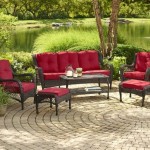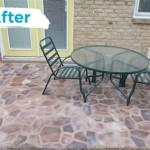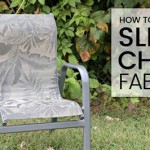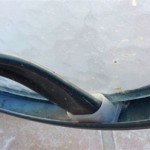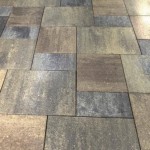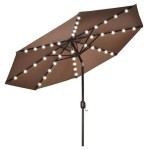Cloth Patio Covers: Exploring the Versatility of Sail Shades
Cloth patio covers, particularly those utilizing sail shades, have emerged as a popular and aesthetically pleasing option for homeowners seeking to enhance their outdoor living spaces. They offer a balance of functionality, style, and affordability, making them an attractive alternative to more traditional patio covering methods. This article will delve into the various aspects of cloth patio covers utilizing sail shades, exploring their benefits, different types, installation considerations, and maintenance requirements.
Sail shades, as a specific type of cloth patio cover, are designed to be tensioned between multiple anchor points, creating a visually appealing and effective shade structure. Their unique shapes and configurations allow for customization and adaptation to a variety of patio layouts and architectural styles. Unlike solid patio roofs, sail shades allow for airflow, reducing the feeling of being enclosed and promoting a more comfortable outdoor environment. The open design also permits some sunlight to filter through, creating dappled light and shadow patterns that enhance the ambiance of the patio area.
Understanding the Benefits of Cloth Patio Covers with Sail Shades
The appeal of cloth patio covers with sail shades lies in the numerous advantages they offer. These advantages encompass both practical functionalities and aesthetic enhancements to outdoor spaces.
Firstly, sail shades offer excellent sun protection. The fabric used in their construction is typically designed to block a significant percentage of harmful ultraviolet (UV) rays, protecting individuals and furniture from sun damage. This is especially crucial in areas with intense sunlight, where prolonged exposure can lead to sunburn, premature aging, and fading of outdoor furnishings. By filtering out UV radiation, sail shades create a safer and more comfortable environment for outdoor activities.
Secondly, sail shades can significantly reduce the temperature of the covered area. The fabric acts as a barrier, preventing direct sunlight from reaching the patio surface. This reduces the amount of heat absorbed by the patio, making the space cooler and more comfortable during hot weather. The airflow facilitated by the open design of sail shades further enhances cooling, by allowing for natural ventilation and preventing heat from becoming trapped beneath the cover.
Thirdly, sail shades provide a visually appealing and customizable option for patio covering. They come in a wide variety of shapes, sizes, colors, and materials, allowing homeowners to choose a design that complements their home's architecture and personal style. The geometric forms and flowing lines of sail shades create a modern and sophisticated look, adding visual interest to the outdoor space. They can be arranged in various configurations to achieve different levels of shade and coverage, providing flexibility in design and functionality.
Fourthly, compared to permanent patio structures, sail shades offer a more cost-effective solution. The materials and installation costs are generally lower than those associated with traditional patio roofs or pergolas. This makes sail shades an accessible option for homeowners on a budget who still desire a stylish and functional patio cover. Furthermore, the relatively simple installation process can often be handled by homeowners themselves, further reducing costs.
Lastly, sail shades offer versatility and portability. They can be easily removed and reinstalled as needed, allowing for seasonal adjustments or relocation to different areas of the yard. This portability is particularly useful for renters or individuals who anticipate moving in the future. The lightweight nature of the fabric also makes storage during the off-season relatively easy and convenient.
Exploring Different Types of Sail Shade Fabrics
The choice of fabric is a crucial consideration when selecting a sail shade, as it directly impacts the shade’s durability, performance, and aesthetic appeal. Various types of fabrics are available, each with its unique properties and characteristics.
High-Density Polyethylene (HDPE) is a popular choice for sail shades due to its durability, UV resistance, and affordability. HDPE fabrics are typically knitted, allowing for good airflow and preventing the formation of water pockets during rain. These fabrics are also relatively easy to clean and maintain, making them a practical option for long-term use. They are available in a wide range of colors and densities, allowing for customization to suit different aesthetic preferences and levels of shade requirements.
Polyester fabrics are another common option for sail shades, offering good strength and resistance to stretching and tearing. Polyester fabrics are often coated with a water-resistant or waterproof finish, making them suitable for areas with frequent rainfall. They are also available in a wide range of colors and patterns, providing greater design flexibility. However, polyester fabrics may not be as breathable as HDPE fabrics, potentially leading to increased heat retention in enclosed areas.
Acrylic fabrics are known for their excellent color retention and resistance to fading, making them a good choice for areas with intense sunlight. Acrylic fabrics are also water-repellent and mildew-resistant, ensuring long-lasting performance in outdoor environments. They are typically more expensive than HDPE or polyester fabrics, but their superior durability and aesthetic appeal make them a worthwhile investment for some homeowners.
Waterproof fabrics, such as PVC-coated polyester or acrylic, provide complete protection from rain. These fabrics are ideal for creating a fully enclosed outdoor space that can be used regardless of the weather. However, waterproof fabrics can restrict airflow, potentially leading to increased heat and humidity beneath the cover. It's important to consider the potential for heat buildup when choosing a waterproof fabric for a sail shade.
The choice of fabric will depend on factors such as the climate, the desired level of shade and weather protection, and the budget. It's important to carefully consider the pros and cons of each fabric type before making a decision.
Key Considerations for Sail Shade Installation and Maintenance
Proper installation and maintenance are crucial for ensuring the longevity and performance of a sail shade. Several factors need to be considered during the installation process to guarantee a secure and effective shade structure.
Firstly, the anchor points must be strong and stable enough to withstand the tension of the sail shade. Suitable anchor points include existing structures such as walls, posts, or trees, or purpose-built posts specifically designed for sail shade installation. The anchor points should be securely anchored to the ground or structure to prevent them from pulling out under stress. It's important to consult with a professional engineer or contractor to ensure that the anchor points are adequate for the size and weight of the sail shade.
Secondly, the tensioning system must be properly adjusted to ensure that the sail shade is taut and wrinkle-free. Tensioners, such as turnbuckles or pulley systems, are used to apply the necessary tension to the fabric. The tension should be evenly distributed across all anchor points to prevent uneven stress on the fabric and anchor points. Over-tensioning can damage the fabric and anchor points, while under-tensioning can result in sagging and reduced shade effectiveness.
Thirdly, the sail shade should be installed at the correct angle to maximize shade coverage and prevent water from pooling on the fabric. The angle of the sail shade should be adjusted based on the position of the sun and the desired level of shade. A slight slope should be incorporated into the design to allow rainwater to run off easily and prevent the formation of water pockets. Water pockets can stretch and damage the fabric, reducing its lifespan and effectiveness.
In terms of maintenance, regular cleaning is essential for keeping the sail shade looking its best and preventing the buildup of dirt, mold, and mildew. The frequency of cleaning will depend on the climate and the level of exposure to the elements. Generally, washing the sail shade with mild soap and water every few months is sufficient to remove most dirt and debris. For more stubborn stains, a specialized fabric cleaner may be required. It's important to follow the manufacturer's instructions for cleaning to avoid damaging the fabric.
During periods of severe weather, such as high winds or heavy rain, it's advisable to remove the sail shade to prevent damage. Strong winds can tear the fabric and damage the anchor points, while heavy rain can cause water pockets to form and stretch the fabric. Removing the sail shade during severe weather will significantly extend its lifespan and prevent costly repairs.
Finally, regular inspections of the fabric, anchor points, and tensioning system are important for identifying and addressing any potential problems early on. Look for signs of wear and tear, such as frayed edges, tears, or loose stitching. Inspect the anchor points for signs of corrosion or damage. Check the tensioning system to ensure that it is properly adjusted and functioning correctly. Addressing these issues promptly will prevent them from escalating into more serious problems.
By carefully considering these installation and maintenance guidelines, homeowners can ensure that their cloth patio cover with sail shade provides years of reliable shade and enjoyment.

Shade Sails Coolaroo

Backyard Shade Sails Landscaping Network

Shade Sails Custom Tension Structures Fabric Cloth Covers Valley Patios Aluminum Patio Cover Specialists

How To Install Shade Sails The Cover Blog

Shade Sail Patio Covers Superior Awning

8 Best Sun Shade Sails Of 2024

11 Types Of Outdoor Shade Sails Which One Is Right For You Shadeform Blog

11 Types Of Outdoor Shade Sails Which One Is Right For You Shadeform Blog

Shade Sails An Easy Diy Guide To Installing Your Own Reviewed

5 Things To Keep In Mind When A Shade Sail



